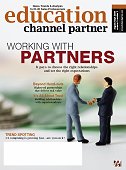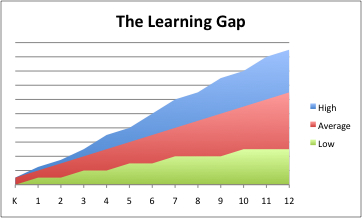 This panel is made up of seasoned veterans of the M&A markets for Education Technology companies. They addressed the K12, Higher Education / Post-secondary, and general M&A climate.
This panel is made up of seasoned veterans of the M&A markets for Education Technology companies. They addressed the K12, Higher Education / Post-secondary, and general M&A climate.
The panelists are:
- Moderator Jeff Fromme – Dorsey and Whitney LLP
- Robin Warner – Managing Director at Van Tulleken Company. K-12 Market
- Vivek Kamath Director Berkery, Noyes & Co. – Higher Education.
- Mark Marchesano with the Jordan, Edmiston Group (JEGI). M&A in a Turbulent Market.
It is sponsored by Empirical Education.
Key insights:
- Look to the UK market – it is an 18 month leading indicator of what is going to happen in the US market.
- Professional Development is now mandatory for all solutions in the UK. Are publishers using this to hold open source at bay or is this a real switch taking place?
- The US market is contracting – there are fewer strategic buyers because they have all merged and the Private Equity guys are sitting things out for a while.
- Buyers don’t want to take any risk right now – only companies with proven business models, strong teams, and organic growth need apply.
- For profit higher ed is growing – the economy is actually helping with this as people look to expand their skill base.
- Expect to see many buyers looking for bargains over the next couple of years. Don’t expect to see much in the way of IPOs.
- In K12 multiples are higher (almost double) for companies that have a strong technology component – but it has to be integrated well – it can’t be a bolt on.
- Multiples are higher for Higher Ed than K12.
For my more free form notes follow below the fold.
 The Education Business Blog
The Education Business Blog






 The global economic meltdown is going to affect education budgets. States and School Districts will react to a drop in tax receipts and a credit freeze. This entry is an attempt to map out some of the possibilities for how the slowdown will play out in schools.
The global economic meltdown is going to affect education budgets. States and School Districts will react to a drop in tax receipts and a credit freeze. This entry is an attempt to map out some of the possibilities for how the slowdown will play out in schools. Do you need to pick a target market when entering the education market? One of the true signs of a rookie is a business plan built on selling to
Do you need to pick a target market when entering the education market? One of the true signs of a rookie is a business plan built on selling to  Rookies in the education market make a set of common mistakes. There are five concepts you need to grasp about selling to schools that will help you avoid execution error as you enter the learning market. Consider these the iron laws of marketing to public schools. Accept them, nay embrace them, and your job will be easier.
Rookies in the education market make a set of common mistakes. There are five concepts you need to grasp about selling to schools that will help you avoid execution error as you enter the learning market. Consider these the iron laws of marketing to public schools. Accept them, nay embrace them, and your job will be easier.

 Hot sizzling education publishing and ed-tech related links here! Obama’s call for more teachers, kids media preferences, 2.0 de jour, and assessing 21st Century skills all get a nod in a short week.
Hot sizzling education publishing and ed-tech related links here! Obama’s call for more teachers, kids media preferences, 2.0 de jour, and assessing 21st Century skills all get a nod in a short week.